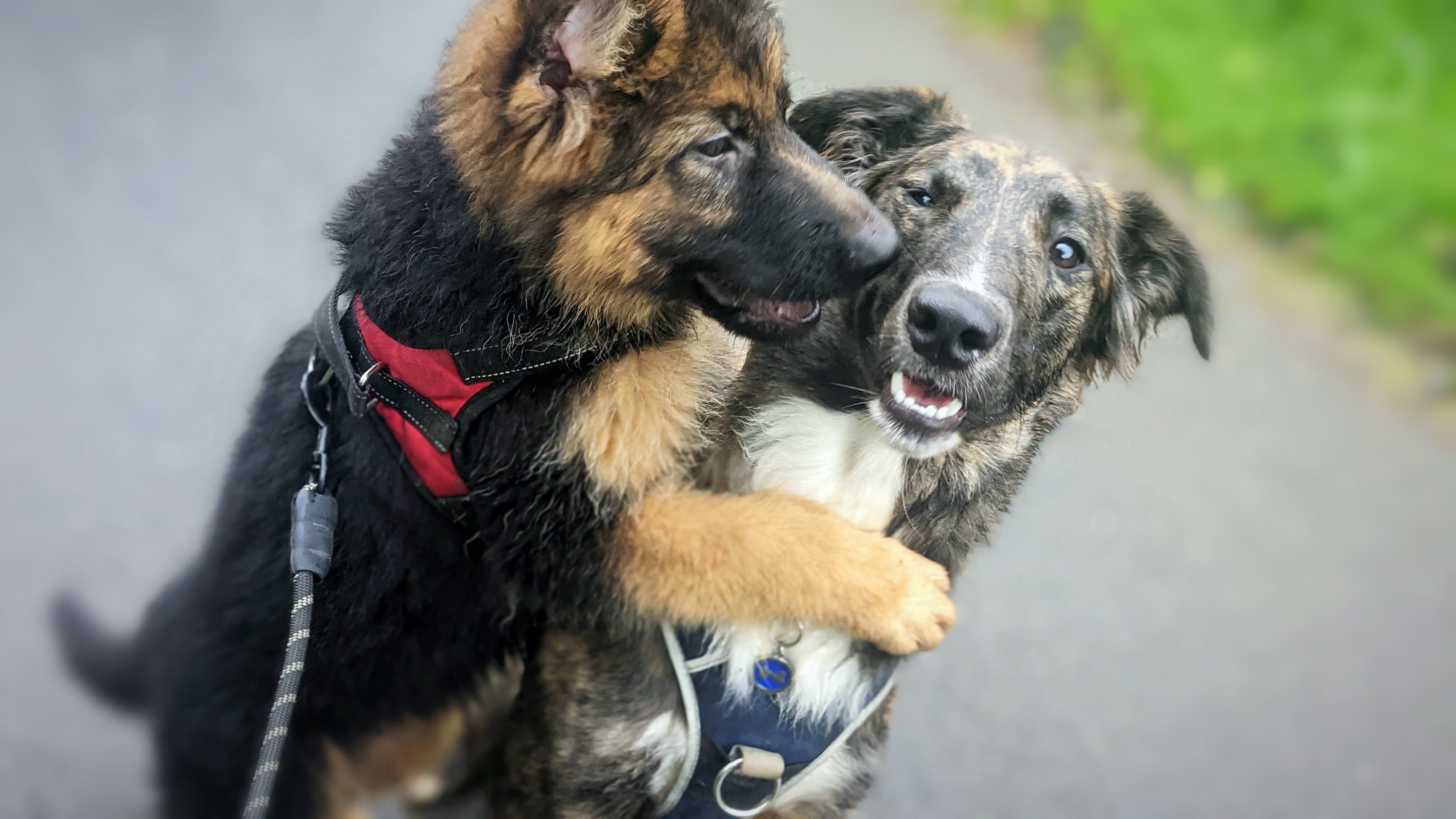Puppy Tails (5)
Continuing “Puppy Tails” detailing the training going on with our two young doggos – Rollo and Brina.
If you’re wondering where July’s post is… Well, it isn’t I’m sad to say. We’re in the process of preparing to move and time got away from me! However, if you’re in the same situation, please check out posts done by myself and Our Dog Friends related to moving with pets – link 1 and link 2.
Our Brina has turned one year old last month!
She and Rollo have been working recently on training commands, during on lead walkies – keeping them interested and engaged, to alleviate any frustration of being restricted to lead walks (now that the local livestock are back out in the fields) and to keep their focus on their handler. This has also come in handy with Rollo being restricted to lead walks for 2 weeks after a recent foot injury.
One of the commands we have been working on is “touch” – asking them to come away from whatever they’re doing and putting their nose on my hand. Rollo picked this up almost immediately, and Brina had the hang of it after just a couple of days – although Brina does like to put her nose and tongue on you 😅.
The idea is that these commands can also be used when the dogs are off lead, to come back (reward motivation) when I need them to. Dogs can become fixated on things that draw their attention away from you, and make them seem like they have selective hearing! They can grow out of this, with consistent training, but being able to manage their behaviour when this happens is key. No dog behaves perfectly 100% of the time, especially when they’re in their ‘teenage’ phase, no matter what some trainers will have you believe about their own (speaking from experience). So a variety of training commands for a variety of situations will prove helpful. So far, the off lead response to “touch” has been very good!
Brina is highly motivated by food, and will immediately “focus” when I give the command, when she knows I have treats in my pocket! This has helped train new commands, like “touch” as she quickly learns what behaviour she has performed that resulted in the treat and is keen to perform the behaviour on command, for a reward of course! Low fat/ calorie treats work best if you’re giving out a fair few in training sessions – remember that food/ treats given in the day will impact their daily food intake (so adjust as necessary).
Rollo likes to change his motivation – when he was under 1 year old, he was like Brina; highly motivated by treats. When he was around 1 year old he lost his interest in treats on walks, but was highly motivated by the reward of his squeaky ball! Now, he is back to being motivated by treats – but only by the right treat… Otherwise, the squeaky ball usually does the trick. Honestly, sometimes I think he wakes up in the morning and decides what he wants to be motivated by that day, in a training session or when a command is given! So, when we go out, I’m prepared with whatever I may need to keep his attention on me when necessary.
Alongside training “touch” as a new command, I’ve been reinforcing “go on” whilst on lead walks. When I’m training on lead, the dogs need to be focused on me as their handler, until I tell them “go on” which is accompanied by me giving them the length of the lead (providing it is safe to do so) and allowing them to walk for them – sniffing, dawdling, etc. (In my mind this stemmed from “go on, do your own thing”.)
It’s important to have a break command such as “go on” so your dog knows when training is done and they’re free to do their own thing.
“Touch” was initially introduced by asking the dogs to “sit” and “focus” (or “look at me* – whichever works) and me saying the word “touch” whilst gently touching my palm to their nose. After a few times doing this, I then held my hand close to their nose, and asked them to “touch”. This was then developed to be done whilst walking, and as a way to get their attention back on me.
Let me know in the comments or on social media (see below) if you try to teach “touch” yourself and how it goes!
To read the previous”Puppy Tails” please follow the links below:
• Puppy Tails (1) • Puppy Tails (2) • Puppy Tails (3) • Puppy Tails (3A) • Puppy Tails (4) •
All images are either open source, Google images, or my own – or photos donated for use by the pet owners.
If you have any questions or comments; please post a comment below, or contact Ali’s Answers via one of the social media pages…
• Facebook (Ali’s Animal Answers)
• Instagram (@alis.animal.answers)
• Twitter (@AlisAnswers)
• LinkedIn (Ali Lloyd)



























